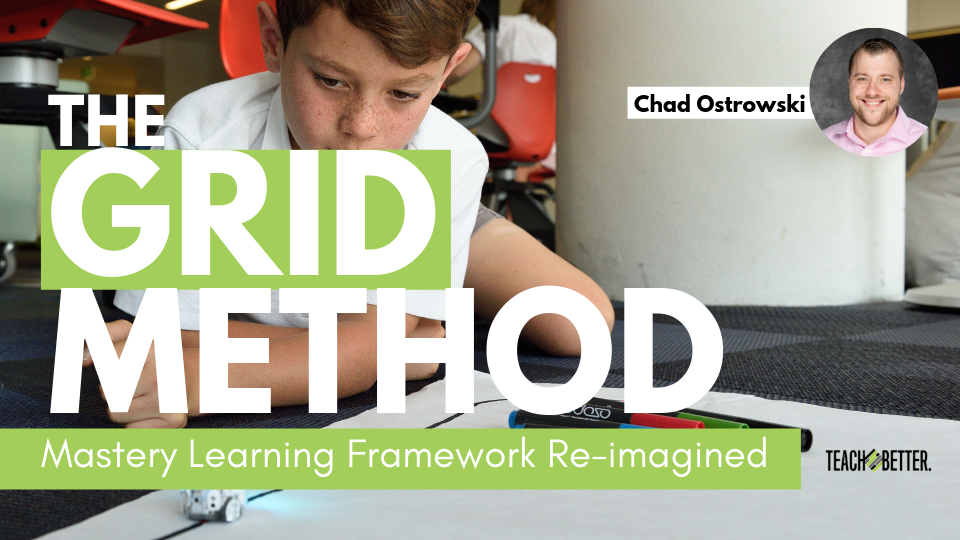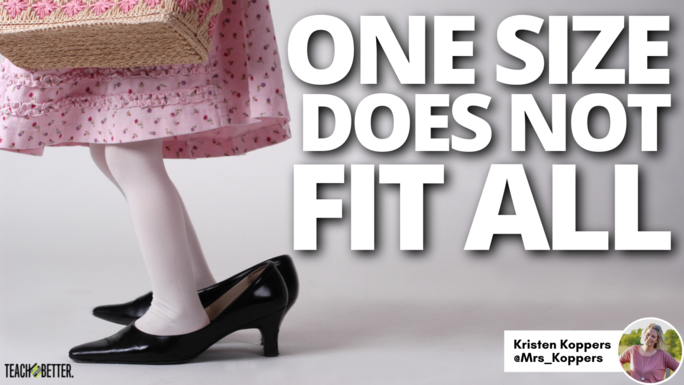TL;DR:
- Just like it’s impossible for one size of pants to fit all students, one way of teaching will not reach all students.
- In addition, teachers come from a variety of backgrounds themselves and naturally have different styles.
- Learn how to differentiate instruction to meet the needs of each student.
The Perfect Pants
The movie Sisterhood of the Traveling Pants was one movie that brought together friendship through hardships. The whole premise is that each girl wears the pants, writes on them, and sends them back to each other throughout the summer. But, it’s impossible that a single pair of pants fit each girl perfectly, regardless of their size.
We all know that one size does not mean one size. The fact that one pair of pants can fit four different girls perfectly, who all have different body types, is not realistic. Although the movie revolves around the jeans traveling from one friend to the next, it was more about the friendship of the four girls. They were apart but were able to be there for each other during the times when they needed someone. Well, that’s what we are meant to think.
The idea of the “perfect pants” relates to education in so many ways. While we hope that one size of pants (learning style) would fit more than one student, we know that is not the case. Students come from a variety of backgrounds, cultures, schools, and learning abilities, so we cannot think that one curriculum, or one “pair of pants,” can fit all. This is the same for purchasing a Halloween costume or outfit where the tag says “one size fits most.” Someone who weighs 120 pounds wearing the same costume that a person who weighs 30 pounds more won’t fit the same way. While the outfit will fit both sizes, the look will be quite different for each person.
ONE SIZE DOES NOT FIT ALL!
What many forget is that teachers come from all backgrounds, cultures, and educational institutions. We cannot expect one teacher to teach the same way as other teachers. This is the same for students. It would be a perfect world if one style of teaching would reach all students; however, this is not the case.
Differentiating work can be difficult as well to meet the needs of all students. In order to have that perfect pair of pants to fit all students, teachers must be willing to put their ego and pride aside and stretch the pants just a little wider so that multiple sizes can fit.
The struggle is real.
We all know how it is to try and fit into a fresh pair of washed jeans. The jeans that fit you the day before now feel tighter twenty-four hours later. If we think about how that one pair of jeans fit the day earlier and then the next day they don’t, this is how many students feel! One day they feel like they understood the information and then the next day, nothing makes sense.
Using differentiated instruction is not about separating students or creating one lesson plan for many. It’s about assessing student needs throughout the year. While one lesson plan will help several students at one point, another lesson plan may not work for the rest. Assessing students’ needs does not need to be cumbersome. It can be as simple as noticing non-verbal clues in the classroom to written work.
[scroll down to keep reading]
Recently, we were reading a novel by Gabriel Garcia Marquez. Students were intrigued by the reading and began to focus on the plot. It wasn’t until they shared out what they learned with the class that everything unfolded. When I moved around the room, most groups were able to explain what they were thinking. However, between the individual group discussions and the informal presentation, something went wrong. That was where I used differentiated instruction. We discussed the lesson, the assignment, and the guidelines. It was the connection from what they read to their knowledge that seemed “not to fit.”
As an educator of over twenty years, I swallowed my pride. Instead, I learned how to fit into a pair of jeans that did not fit me. Through discussions, I was able to use a modified form of differentiated instruction to meet the needs of all my students. I wanted them to be in control, as much as possible, of what they learned. If they did not like their grade, they had the choice to complete one of the two alternative assignments. My students were able to choose because, after all, they are the ones who truly knew their own learning abilities.
When one pair of pants does not fit, we shouldn’t just give them away and buy a different pair. We need to stretch them a little to fit better.
About Kristen Koppers
Kristen is a blogger, presenter, self-published author, and high school educator as well as an adjunct teacher at the local junior college. She has been teaching for more than fifteen years and is currently teaching high school English in Illinois. She is a Google Certified Educator and National Board Certified Teacher. Kristen has a master’s degree in English and a second in Education Administration.
Kristen wrote the book Differentiated Instruction the Teacher Profession as a way to share her ideas of how to use Differentiated Instruction inside the classroom. As an educator, it is important to find innovative ways to meet the needs of her students. Kristen is often on Twitter (@Mrs_Koppers) participating in chats and collaborating with other educators. It’s easy to share DI ideas on Twitter (#DITeaching).



